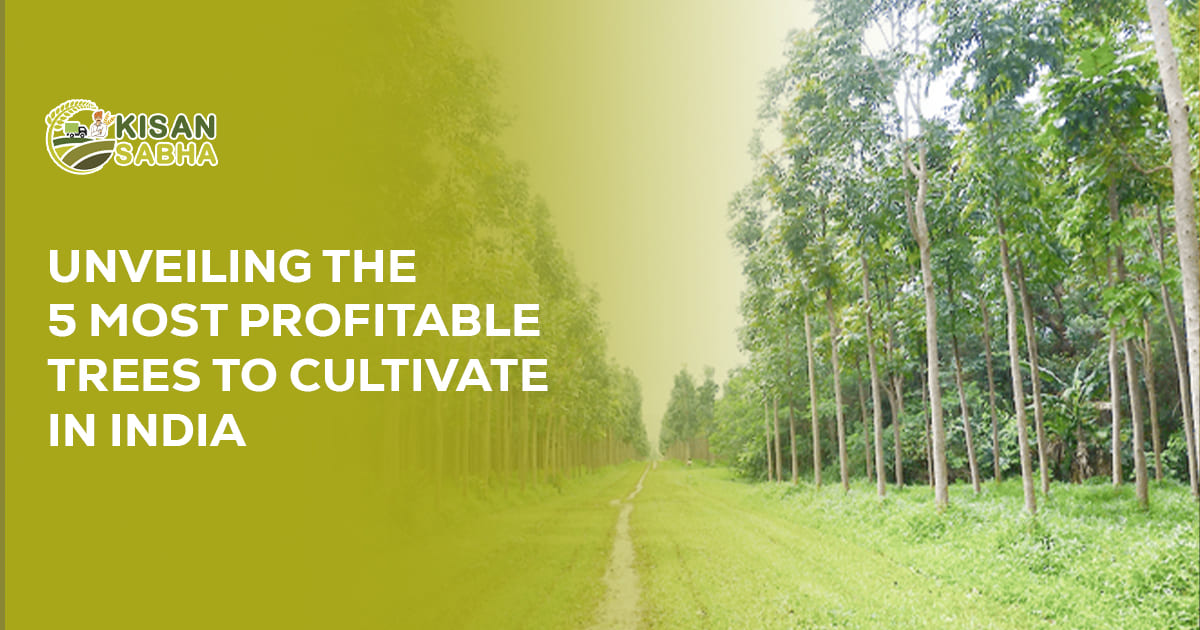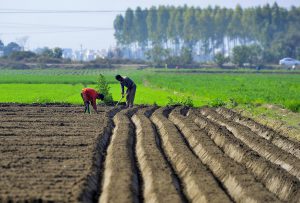Undeniably, in an era plagued by escalating environmental apprehensions and economic ambiguities, the notion of espousing sustainable and lucrative cultivation practices has assumed paramount importance. Within the Indian context, where agriculture has persistently served as a bedrock of sustenance for countless generations, it becomes crucial to investigate remunerative alternatives. In this context, one particularly compelling prospect that has emerged is the cultivation of profitable trees, presenting a harmonious coalescence of ecological preservation and economic prosperity.
This article delves into the five most profitable trees to grow in India, shedding light on their benefits, challenges, and potential for both environmental and economic success.
5 Most Profitable Trees to Cultivate in India
1. Sandalwood (Santalum Album)
Unquestionably, sandalwood, revered for its exquisitely aromatic heartwood, is esteemed in India’s vibrant cultural and economic heritage. Given the current market dynamics, wherein the demand for its aromatic oil and heartwood surpasses the available supply, it becomes evident that cultivating sandalwood has piqued considerable interest, largely owing to the remarkable profit prospects it encompasses.
Benefits:
- High Market Value: Sandalwood commands a high market price due to its scarcity and extensive use in perfumes, cosmetics, and religious rituals.
- Long Growth Cycle: While a longer growth cycle (around 15-20 years) is required, the financial rewards upon maturity are substantial.
- Resilience: Sandalwood trees are relatively drought-resistant and adaptable to varying soil conditions.
Challenges:
- Initial Investment: Establishing a sandalwood plantation demands careful planning and significant upfront costs.
- Long Gestation Period:
Unquestionably, the protracted timeline associated with harvesting these profitable trees obligates cultivators to exercise patience and maintain a steadfast, long-term dedication to their endeavors. - Illegal Harvesting: Due to its high value, sandalwood is susceptible to illegal harvesting, requiring security measures.
2. Teak (Tectona Grandis)
Teak, renowned for its sturdy and durable wood, is another lucrative tree for cultivation in India. Its timber is highly sought after for furniture, construction, and boat-building.
Benefits:–
- Rapid Growth: Teak trees exhibit relatively faster growth rates than other hardwoods.
- Strong Timber Demand: The demand for teak timber is consistently high, contributing to its profitability.
- Global Appeal: India’s teak is globally recognized for its quality and durability.
Challenges:
- Initial Investment: Like sandalwood, establishing a teak plantation requires considerable initial investment.
- Pest and Disease Management: Teak trees are susceptible to pests and diseases that demand careful monitoring and management.
Also Read:- Agricultural Hi-Tech Farming Methods and Their Advantages
3. Bamboo
Bamboo, often referred to as the “green gold,” is a versatile plant with a multitude of applications, from construction to paper production and even textiles.
Benefits:
- Rapid Growth: Bamboo is known for its exceptional growth rate, allowing for multiple harvests within a short span.
- Wide Range of Uses: Bamboo has a plethora of applications, including construction, furniture, handicrafts, and more.
- Sustainability: Bamboo’s rapid growth and renewability contribute to its eco-friendly appeal.
Challenges:
- Varied Species: Different species of bamboo cater to specific uses, necessitating informed planting decisions.
- Marketing and Processing: Setting up an efficient marketing and processing infrastructure is crucial for maximizing profits.
4. Aloe Vera
Indeed, the cultivation of Aloe vera in India presents a remarkable opportunity, owing to its immense value in medicinal and cosmetic applications. Notably, this endeavor is gaining momentum due to the significantly higher profit margins it offers compared to conventional agricultural practices, coupled with its inherent resilience and comparatively lower water requirements.
Benefits:
- Health and Wellness Demand: Aloe vera’s popularity in the health and wellness sector has driven up its demand.
- Low Land Requirement:
Aloe vera is well-suited for cultivation on modest land plots, enabling small-scale farmers to engage in this lucrative agricultural practice effectively. - High Yield Potential: Aloe vera plants can yield a substantial harvest with proper care and management.
Challenges:
- Quality Control: Maintaining the quality of aloe vera gel is critical, as the market demands high standards.
- Processing and Marketing: Establishing effective processing and marketing channels is essential for profitability.
5. Neem (Azadirachta Indica)
As a cornerstone of Indian traditional medicine for centuries, neem, commonly known as the “village pharmacy,” presents a diverse array of applications. Consequently, its versatile potential renders neem a highly promising contender for financially rewarding cultivation.
Benefits:
- Medicinal Properties: Neem has diverse medicinal properties, making it an essential ingredient in pharmaceuticals and cosmetics.
- Insecticidal Properties: Neem’s natural insect-repellent properties have earned it recognition as a biopesticide.
- Sustainable Demand: Neem’s applications in various industries ensure consistent demand.
Challenges:
- Knowledge and Expertise: Indeed, cultivating neem for its medicinal properties necessitates a comprehensive understanding of time-honored practices and methodologies.
- Pest Management: While neem has insecticidal properties, it is also susceptible to pests that require proper management.
Also Read:- A Complete Guide on Using Perlite for Plants
Conclusion:
Cultivating profitable trees in India offers a sustainable and economically viable approach to addressing environmental challenges while fostering financial growth. Each of these trees brings its own unique set of benefits and challenges to the table. However, a successful venture necessitates meticulous planning, in-depth research, and a long-term commitment.
While these five trees hold immense potential, it’s important to note that profitability is not immediate. The journey from planting to harvesting and finally reaping financial rewards requires patience, dedication, and a holistic approach. By leveraging the benefits and addressing the challenges, farmers and entrepreneurs can harness the potential of these trees to contribute to both the environment and their prosperity.





